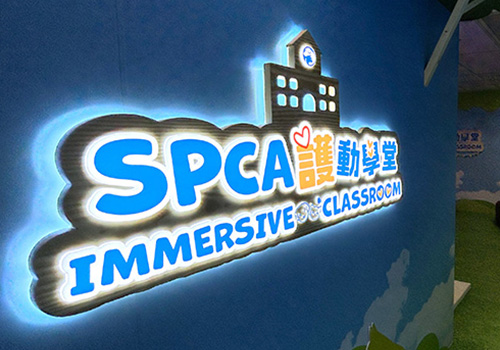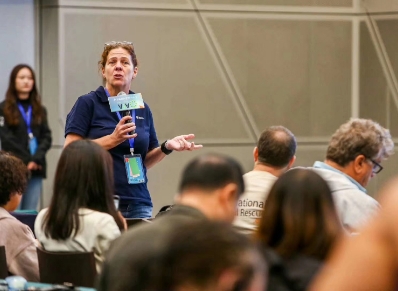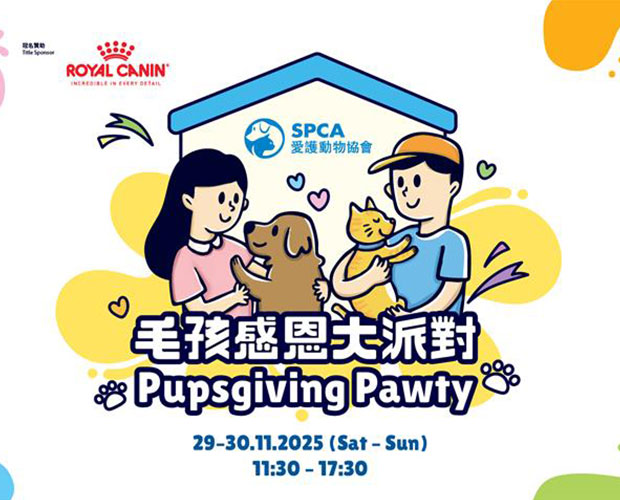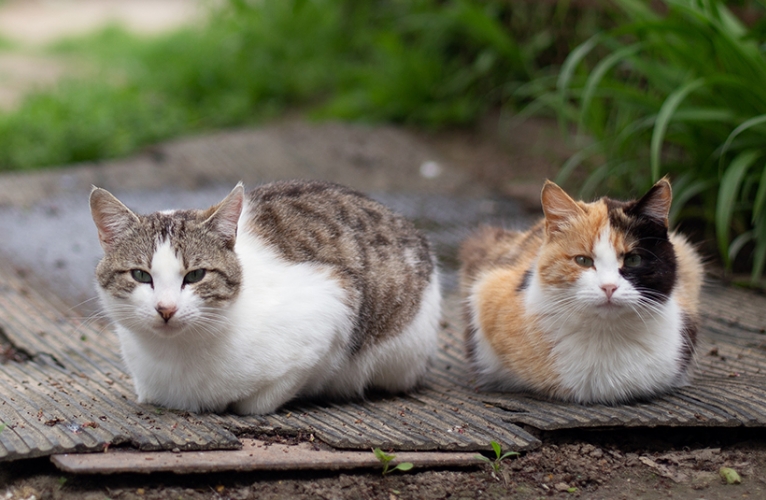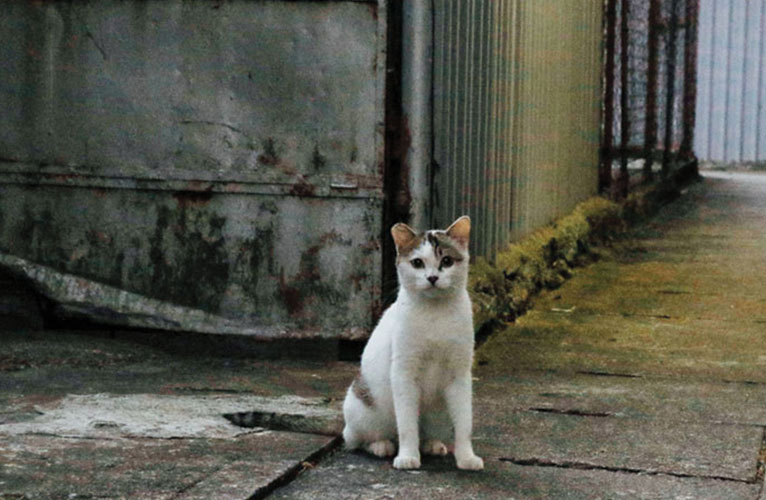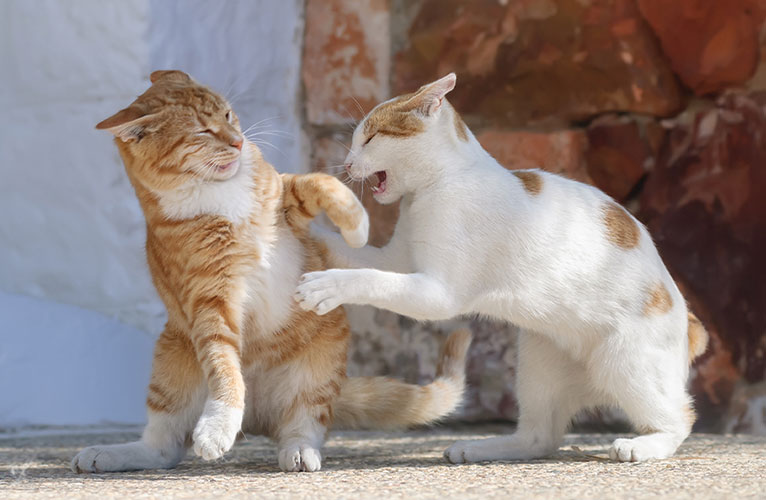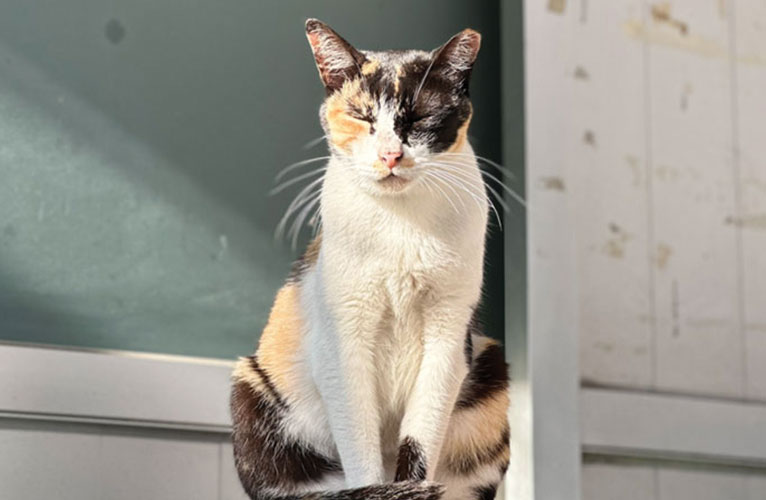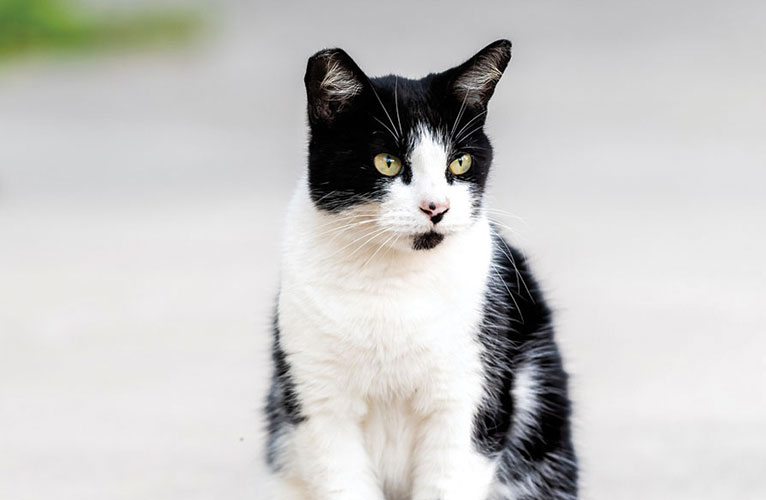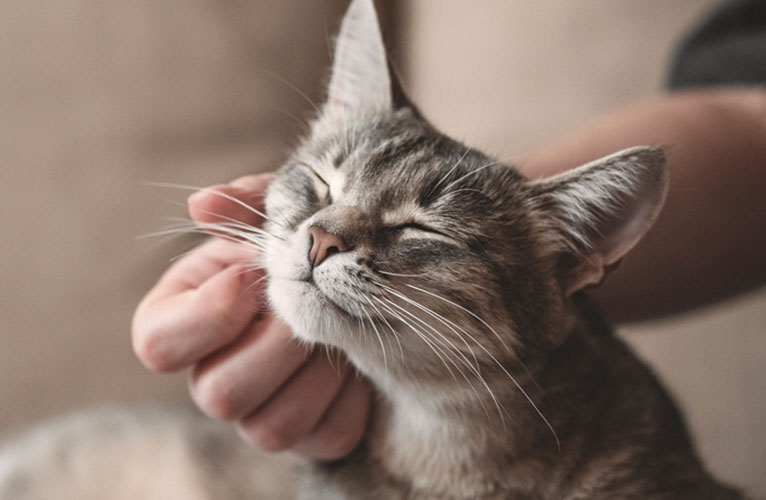
WHY ARE SOME STREET CATS MISSING A CORNER OF THEIR EAR?
This is what the SPCA utilises in its ‘Cat Colony Care Programme’ (CCCP) to identify street cats that have been desexed through the Programme, so that we can monitor the Programme and avoid unnecessarily repeating operations for already-sterilised cats. In order to distinguish the sex of the cat, male cats will have the corner of their right ear tipped and female cats will have the corner of their left ear tipped.
For more details, please refer to the “Cat Colony Care Programme – How to Spot a CCCP Cat” page.
CONTINUING TO BRING HOPE AND HEALTH TO STREET CATS
Have you ever thought about where street cats come from?
For many years, cat owners’ poor animal welfare awareness and behaviour, coupled with uncontrolled reproduction on the street, led to an increase in the street cat population. These sick and unwanted cats were often discarded on the street or sent to the SPCA, some of them caught or collected by the Agriculture, Fisheries and Conservation Department (AFCD). In the early years, with the public’s limited awareness of adoption and rising cases of abandonment, the relevant government departments and the Society faced difficult decisions, including the euthanasia of abandoned cats. This was a challenging time and the SPCA have since made significant strides in educating the public and reducing abandonment, including the introduction of the concept of Trap-Neuter-Return (TNR) programme in the late 1990s to manage the number of street cats. This aimed to improve their welfare in a more humane and sustainable way. After much research and discussion, the Society officially launched the CCCP in August 2000 to address the problem at source.
Starting with a small group of enthusiastic volunteers, they identified cat colonies one by one, gradually building up a record of street cat “pawprints” throughout Hong Kong. Volunteer carers put a great deal of time and effort to gain the trust of cats in a colony, before gradually starting a cat-trapping operation, sometimes with the support from the Society’s welfare team or experienced volunteers. As the driving force behind the CCCP, the Society undertakes the overall management and liaison works to ensure that it operates smoothly and successfully. Another major part of our role is providing practical support in terms of free desexing, vaccinations, microchipping and basic preventative treatment against parasites. Finally, the cat’s ear is “tipped” to enable easy identification of cats who are part of our Programme and have already been desexed. It is not a missing corner but helps to safeguard these cats’ futures and is a mark of happiness and health!
CCCP Achievement
CCCP Ear-Tipped Cats: 18-District Pawprint Map
No. of active colonies
- Central & Western District: 128
- Eastern District: 85
- Island District: 118
- Southern District: 115
- Wan Chai District: 72
- North District: 144
- Tai Po District: 186
- Tuen Mun District: 105
- Yuen Long District: 290
- Tsuen Wan District: 77
- Kwai Tsing District: 65
- Shatin District: 128
- Kowloon City District: 105
- Kwun Tong District: 71
- Sai Kung District: 115
- Sham Shui Po District: 59
- Wong Tai Sin District: 34
- Yau Tsim Mong District: 121
Total: 2018
25 Things You Have to Know about “Cat Colony Care Programme”
01
Prior to the launch of CCCP, “Cat boxes” were set up around Hong Kong and Kowloon for people to “post” unwanted kittens and adult cats. It was not ideal, but better than cats being abandoned on the streets to suffer.

02
Back in the day, the Society’s Head of Inspectorate, Anthony Leung, was assigned to collect abandoned cats from “Cat Boxes”. He remembers opening the boxes and noted a lot of the cats were new-born kittens, suffering from injuries or illness. In fact, 80% of the cats that were left in these “Cat Boxes” were injured and sick.
03
Now the only “Cat Box” left is displayed in the Hong Kong History Museum.
photo credit: Hong Kong Museum of History
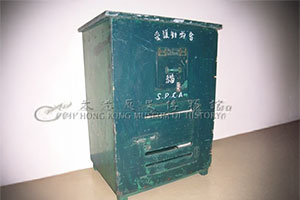
04
When the CCCP first launched, it covered eight regions in Hong Kong with only 10 CCCP volunteer carers, one full-time veterinary nurse and the SPCA providing free desexing surgery.
05
In the early stage of the CCCP, the SPCA set up a Community Relations Inspectorate team to help implement and promote the Programme in the community. It is now replaced by two full-time staff from the Welfare Department and a vast network of volunteers, but the SPCA Inspectorate team continues to help with rescuing CCCP cats in need.
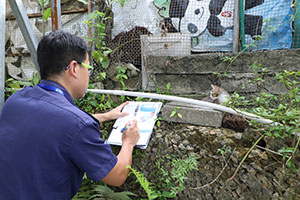
06
The SPCA built the CCCP slowly and eventually the scale required the allocation of a full-time vet and two nurses operating 5-days a week usually on up to 40 cats per day. At the height of demand, we were performing more than 6,000 surgeries per year!
07
Lamma Animal Welfare Centre and its voulunteer carers and helpers were one of the first members of the SPCA CCCP carer team. From a time when every garbage bin on Lamma was a feeding station for stray cats, to today when you rarely see a cat around, we have witnessed a reduced number of strays. Click here to find out more about our work on Lamma Island.
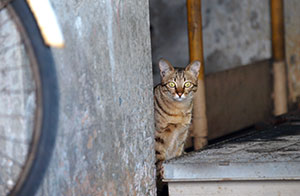
08
Mrs. Lucy Wong, a Trustee of the SPCA , recommended the CCCP to the Jockey Club Veterinary Department to assist with population and health management of the cats in the stables, which live there and help with rodent control.
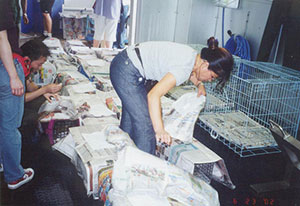
09
In 2003, the Jockey Club loaned out the stable’s veterinary recovery facilities as temporary operating rooms, so that the Society’s veterinary team could perform sterilisation on the spot. This “Cat Nip Mission” (a large-scale cat trapping operation) desexed 79 cats.
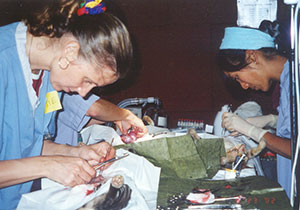
10
Some horse trainers have been so impressed with the results that they regularly donated to the Programme. Over the past 22 years, some stables have opened their own “cat worlds”, and the feline friendly staff have become volunteer carers to help manage their cat populations.
11
Lingnan University had been overwhelmed by the presence of street cats from 2004. After many lobbying sessions and educational activities, the Lingnan Cat Colony was born three years later. In 2007, the SPCA team arranged a “Cat Nip Mission” on the campus of Lingnan University. Utilising the mobile Animal Welfare Vehicle, manned with two veterinary surgeons, welfare nurses and volunteers, a total of 91 cats were desexed.
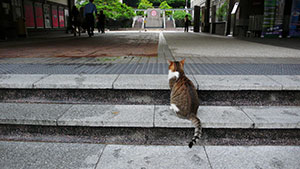
12
Setting up a Cat Colony in Sha Tau Kok was really difficult. Luckily, Wince, an original inhabitant who began feeding street cats in her teenage years, took the initiative and registered colony with the Society’s help. In 2010, she became a volunteer carer and assisted the SPCA team in organising six large-scale sterilisation operations in Sha Tau Kok. To date, the Programme has benefitted nearly 580 cats, and now there is close to a 90% desexing rate in Sha Tau Kok.

13
In 2000, Miss Lam, a cat lover from Peng Chau who had been taking care of feral cats became one of our first volunteers. She helped to extend our Programme to Peng Chau and Hei Ling Chau and assisted in desexing countless cats. The Programme has successfully reduced the number of street cats in Tung Wan, Peng Chau from more than 20 to none currently!
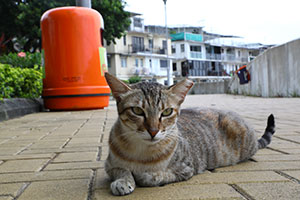
14
SPCA’s Chief Veterinary Surgeon, Dr. Jane Gray, was a CCCP carer herself and looked after “Wong Mao” a male street cat who lived near her apartment and lived to be 16 years old before he passed away due to cancer.

15
Dr Jane’s favourite case in recent years was in 2018, when a street cat called “Bobby” was brought in by our inspectors with a severe neck injury. His wound was so large and infected he required three separate surgeries with special skin flaps to close. Through the dedication of his volunteer carer and a lot of hard work by the Society’s veterinary and welfare team, he was able to be released back to the street.
16
For cats that were suitable for adoption, the Society would help them find a loving home. In 2025, Lau Sing and Noisy, two cats entered our adoption centres through CCCP programme and found a new home as they were identified as abandoned, socialised cats.
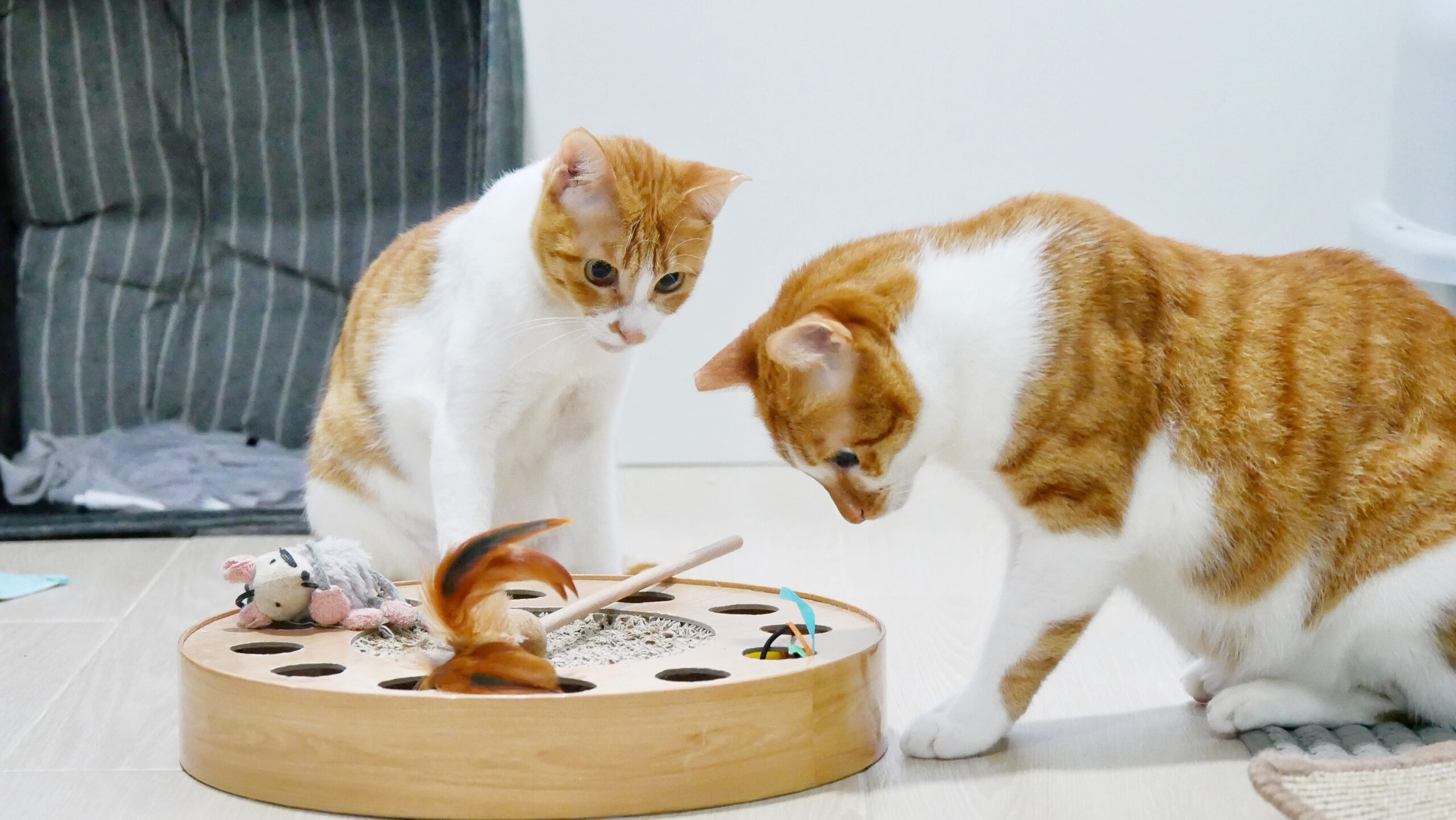
17
Some cats caught through the CCCP are found to be abandoned, socialised cats. They are then considered appropriate “cat-didates” for adoption and are sent to our homing centres. However, sometimes these cats may still feel insecure when they join us. Our welfare team will support them by providing a quiet environment and perform socialisation activities with them regularly to help them adjust to the new settings to become more confident.
18
The first step in our “Trap-Neuter-Return” programme (TNR) is to trap the cat. Feral street cats are usually very frightened when trapped and generally try to escape which may lead to injury. To avoid this stress, the SPCA devised a trap cover made of fabric designed to keep the cats both safe and calm.
19
Soon after the CCCP was launched, the Society enlisted the help of an 86-year-old volunteer, Ms. Hong, who was adept at sewing. She used to make around 36 cat trap covers every year, which throughout the years, has probably amounted to around 700 covers. Unfortunately, since she broke her wrist, she is not able to sew anymore.
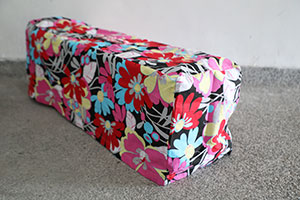
20
Hong Kong is not the first place in the world to operate a Trap-Neuter-Return (TNR) programme. Back in the 1950s, the United Kingdom had already started using TNR to humanely control unowned cat populations. Soon after, the United States, Denmark, Canada and other countries successively adopted similar measures.
21
Ear-tipping, the universal sign of a sterilised street cat, happens during the desexing surgery. In Hong Kong, a cat with a right ear tipped signifies a male cat while a female cat will have the left ear tipped. Around the world, different animal organisations will tip their ears in different manners.
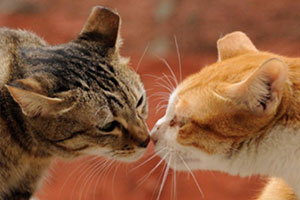
22
If you see a street cat, please do not try to cuddle or catch it. Street cats are very wary of strangers and may feel uncomfortable and threatened if you get too close to them. Streets cats are a part of our community. We should respect them by not disturbing them.
23
The number of cats being humanely destroyed in Hong Kong has decreased by over 90% since the CCCP programme began. See the chart here
24
Our Welfare Research and Development team collaborated on a scientific paper by the University of Hong Kong on the impact of the SPCA’s CCCP on feral cat population management. The paper was published in the Journal of Shelter Medicine and Community Animal Health in 2025.
25
Hong Kong is the first place in Asia to do “Trap, Neuter, Return” for cats. We started this massive project in 2000 and 2025 is our 25th anniversary! Hurray!
The Future of CCCP
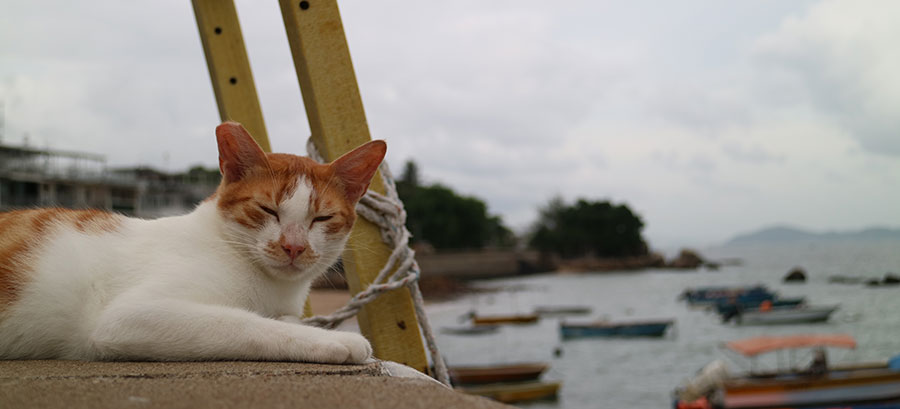
The SPCA hopes to work with more partners and include more areas in the Programme, including country parks, LCSD parks, private areas and some restricted areas. Our new Tsing Yi Centre, with expanded, dedicated surgical facilities for the programme together with our branch clinics, has increased our capacity so we are well able to meet any increase in demand over the coming years.
In the meantime, we will continue to lobby the government to integrate more TNR methodology into its animal management strategy and to consider how feral or street cats entering into AFCD animal management centres may also be able to benefit from the Programme as well as, allocating resources to support the implementation of the Programme.
The Cat Colony Care Programme has transformed the lives of many street cats. We would love to have your help and donations to continue this vital work and help more street cats.
Donate to the Cat Colony Care Programme
Become a Cat Carer

